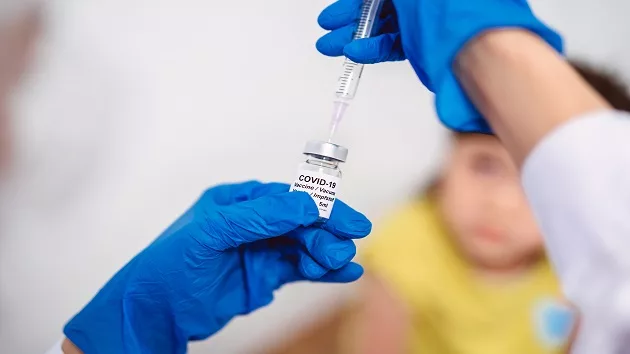(ATLANTA) — Most American adults are not getting enough of their fruits and vegetables, according to a new study from the Centers for Disease Control and Prevention, with even greater disparities found for those living in poverty.
The report, published Thursday, found that only 10% of adults are eating the recommended daily serving of vegetables, and slightly more — 12.3% — are consuming enough fruit.
The recommendations are based on dietary guidelines from the U.S. Department of Agriculture and Health and Human Services, which advise that adults incorporate 2 to 3 cups of vegetables and 1 1/2 to 2 cups of fruit into their diet each day. Eating sufficient fruits and vegetables “can help protect against some chronic conditions that are among the leading causes of mortality in the United States,” the study noted.
Researchers identified notable regional and demographic differences.
Some 16% of Connecticut adults met fruit recommendations while only 8% of West Virginia adults did. Meanwhile, 16% of Vermont adults met fruit recommendations but only 6% of Kentucky adults did.
Women met the recommendations more often than men, while people over 50 met them more often than their younger counterparts, researchers found. Additionally, Black people reached the vegetable goal less often than white or Hispanic people.
Those living below or close to the poverty level were the least likely to meet vegetable recommendations, at 6.8%, the study found.
“Additional policies and programs that will increase access to fruits and vegetables in places where U.S. residents live, learn, work, and play, might increase consumption and improve health,” the study stated.
The study was conducted through the Behavioral Risk Factor Surveillance System, which has been collecting information on American fruit and vegetable consumption for over 30 years, and included 294,566 participants.
The survey included data from 2019, before the start of the COVID-19 pandemic. The researchers noted that barriers to healthy foods, such as cost and limited availability and access, “might have worsened during the COVID-19 pandemic.”
Among its recommendations, the CDC advised that states and communities can support community retail programs “to attract grocery stores and supermarkets to underserved communities to improve community food quality,” as well as promote participation in federal nutrition assistance programs that help low-income people buy healthy foods.
Pandemic-related supply chain issues have particularly impacted people in food deserts, Geri Henchy, director of nutrition policy for the Food Research & Action Center, told ABC News.
“People who live in communities that had issues around the availability of quality, affordable produce, those issues have gotten worse during COVID because of the supply chain problems,” she said.
MORE: How to help feed your community with virtual food drives, donations this holiday season
Henchy also agreed that promoting participation in federal food assistance programs, such as the Supplemental Nutrition Assistance Program, or SNAP, and the Special Supplemental Nutrition Program for Women, Infants and Children, or WIC, will be key, especially after boosts to both during the pandemic.
This past fall, the average SNAP benefit increased by $36.24 per person each month, and the government extended increased fruit and vegetable WIC benefits through March. Those measures should have a positive impact on food and vegetable consumption, though “of course we have a lot of people who are eligible who aren’t in the programs,” said Henchy.
Just over 80% of eligible Americans participate in SNAP, while about half of those eligible for WIC participate, according to the most recent federal data.
ABC News’ Sony Salzman contributed to this report.
Copyright © 2022, ABC Audio. All rights reserved.




